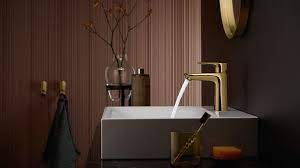Website design is constantly evolving, reflecting shifts in user behavior, technological advancements, and creative experimentation. Staying up-to-date with the latest trends is crucial for creating a visually appealing and user-friendly digital experience. This blog dives into the most prominent website design trends shaping the online landscape in 2023.
Minimalist Aesthetics with Bold Statements
Minimalism continues to dominate web design, but it has evolved to include bold typographic and visual elements. The use of large, dynamic fonts paired with plenty of white space draws attention to key messages and improves content readability. A simplified layout not only enhances navigation but also allows critical information to stand out.
Dark Mode Design
Dark mode design has gained significant appeal among users due to its sleek, modern appearance and energy-efficiency benefits. Websites offering dark mode options provide flexibility for users to choose their visual preference, particularly for night-time browsing. This trend enhances aesthetic appeal while improving accessibility.
3D Graphics and Immersive Experiences
3D visuals, combined with interactive animations, bring depth and life to websites. Advances in rendering technology have made it possible to include high-quality 3D graphics without hampering load times. These immersive experiences are particularly useful for showcasing products, storytelling, and gamified elements.
Inclusive Design and Accessibility
Accessibility-focused design prioritizes inclusivity, ensuring websites cater to users with diverse abilities. Features like screen-reader compatibility, high contrast color schemes, and intuitive navigation are becoming non-negotiable in modern web design. This trend highlights the importance of creating digital spaces accessible to everyone.
Micro-Interactions and Lottie Animations
Micro-interactions, such as hover states, button animations, and loading effects, create delightful user experiences by adding interactive feedback to elements. The use of Lottie animations, lightweight and scalable vector animations, enhances these interactions without compromising load speed, making them a preferred choice for many designers.
Retro and Nostalgic Elements
Retro aesthetics are making a comeback with vibrant color palettes, pixel art, and vintage-inspired typography. This nostalgic appeal resonates with users by evoking memories while still feeling fresh and innovative when combined with modern design principles.
AI and Chatbot Integration
Artificial intelligence has permeated website design, providing tailored user experiences through personalization and virtual assistants. Chatbots powered by AI are designed to streamline customer interactions, offering real-time support with conversational interfaces.
Scalable Typography
Responsive, scalable typography ensures text elements adapt seamlessly across different devices. This trend not only improves readability on smaller screens but also enhances the overall aesthetic quality of a website.
Wrapping Up the Trends
The intersection of creativity, technology, and user-centricity is defining the latest website design trends. From minimalist layouts with bold statements to inclusive design and AI-driven personalization, staying ahead of these trends is key to building visually appealing, accessible, and engaging website experiences.



